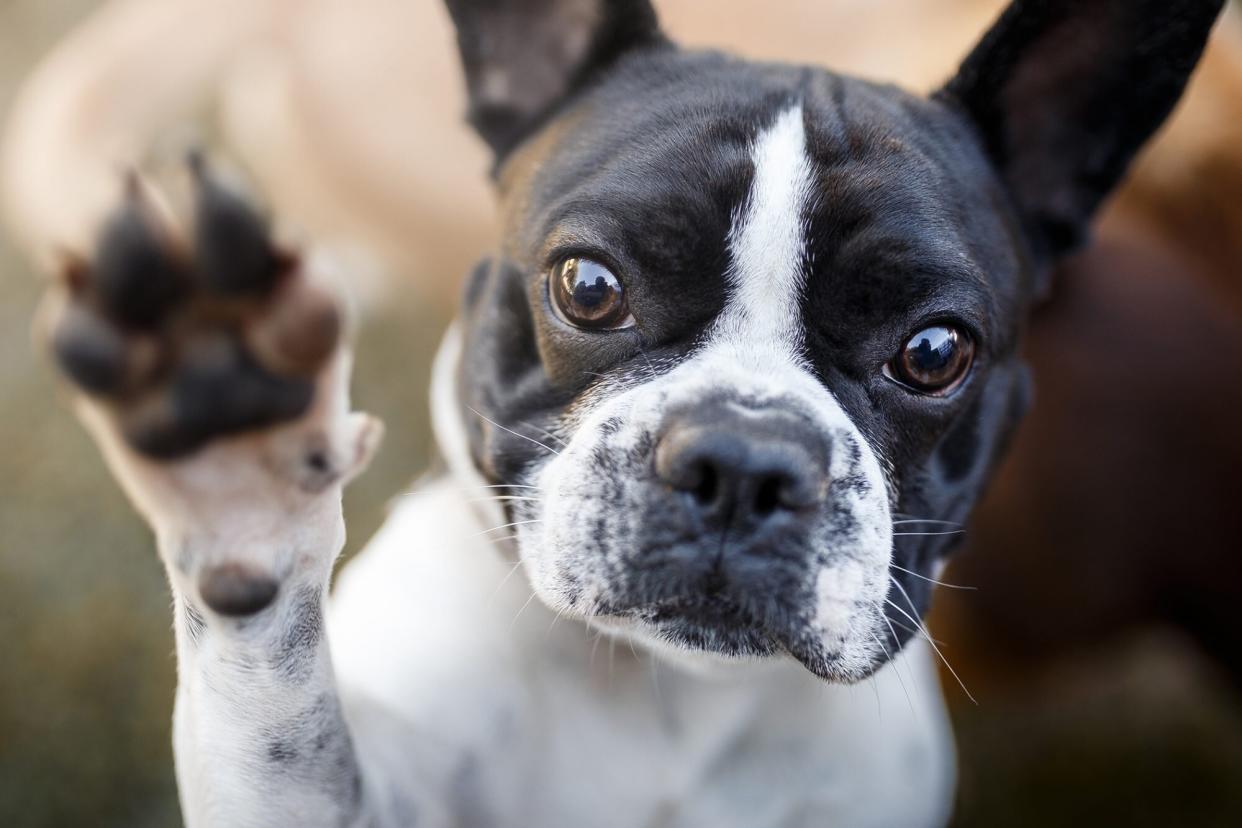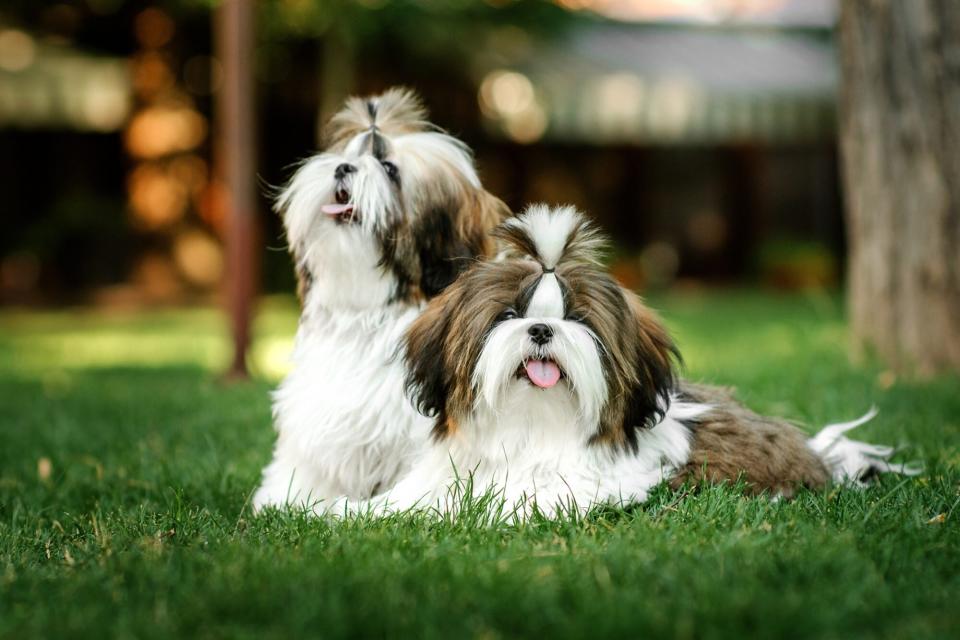What Is Brachycephalic Syndrome? A Guide to Understanding Flat-Faced Dog Breeds

Capuski / Getty
Flat-faced dogs, formally known as brachycephalic dogs, have been bred intentionally over the years for a shortened skull and mini muzzle that yields the characteristic baby face we know and love in many popular dog breeds today. These include the French bulldog and English bulldog, who both rank second and fifth on the list of America's most popular dog breeds, respectively.
"Scientific studies have documented that human beings are emotionally attracted to that kind of face because it reminds us of human infants," says Barry Kipperman, DVM, DACVIM, MS, DACAW, veterinary specialist in animal welfare and board president of the Humane Society Veterinary Medical Association. "Studies have documented that these sorts of facial appearances bring out nurturing qualities in human beings and therefore in lies much of their appeal."
However, as Kipperman puts it, there is a "cost in cuteness" associated with brachycephalic dog breeds because their flattened noses leave little room for air.
What is Brachycephalic Syndrome?
Many brachycephalic dogs are at risk for brachycephalic airway syndrome, a consequence of their nubby noses.
"What happens to those dogs is, as you squish in their face, they still have all that tissue, and so the bottom line is, now you've got all this tissue scrunched into this tiny space, and there's no room for air," Kipperman says.
Large brachycephalic dog breeds, such as the mastiff and Newfoundland, have more substantial noses than smaller breeds, so they may very well have no issues despite their crumpled countenances. The shorter the nose, the more likely the breed is to show symptoms of brachycephalic syndrome, Kipperman says. Pugs, English bulldogs, and French bulldogs have the shortest noses, so it is highly likely they will be affected by brachycephalic airway syndrome, which may present as a variety of symptoms, including:
Noisy breathing
Snoring and snorting sounds
Sleep disturbances (similar to sleep apnea)
Difficulty breathing, especially while exercising or in hot weather
Common Brachycephalic Dog Breed Health Problems
With a restricted airway, it's no surprise these pups may become winded easier when exercising, and a big cause for concern is exposure to hot temperatures. Dogs are able to thermoregulate through their noses, but essentially having no nose to speak of impairs this ability, leaving brachycephalic dogs susceptible to overheating and heat stroke in hot weather.
Brachycephalic syndrome in dogs often also goes hand in hand with obesity. A limited capacity for exercise means these pups can pack on the pounds and often become overweight; in turn, Kipperman says obese dogs are twice as likely to display symptoms of brachycephalic syndrome which, again, compromises their ability for activity. It's a self-fulfilling cycle, and once these already compromised canines are in it, it can be difficult to escape.
Finally, it may come as a shock to owners of these breeds, but the silly snorts and snores you've come to expect from your flat-faced pup—while certainly endearing—aren't normal.
"Snoring and snorting are not normal sounds for a dog," Kipperman says. "What they represent is impaired capacity to breathe. Unfortunately, academic studies have documented that the owners of these dogs normalize these and become accustomed to them so that they don't perceive that their individual dog has a problem."
Brachycephalic dog breeds do often have shorter lifespans than other dogs and are more likely to pass away due to an inability to breathe than other dog breeds.
Thankfully, identifying an issue with your pup, even if it starts with a snort or established pattern of snoring, can help improve their quality of life and inform the way you care for them.
How to Care for a Brachycephalic Dog
Ensuring your pup has a healthy life begins with the breeder. Since brachycephalic dog breeds are so popular, non-reputable breeders have emerged on the scene. While it may be that all brachycephalic dog breeds are susceptible to brachycephalic airway syndrome, those born from breeders who are misinformed or who have the intention of birthing as many puppies as possible—regardless of their health or conditions—may host a number of additional deformities. Kipperman recommends doing your research before buying and seeking dogs from certified breeders through the AKC only.
RELATED: 9 Tips to Avoid Fake Breeders, Faux Rescues & Internet-Based Puppy Mills
Though the health risks associated with brachycephalic dogs may seem daunting, lifestyle modifications are often able to prevent any serious symptoms from emerging. Since so much of these dogs' issues stem from sustained exercise or exposure to the elements, a modified exercise routine goes a long way. Save long walks for temperatures in the 50s or 60s, and avoid extended outdoor activity when temps are above 80 degrees.
Otherwise, many brachycephalic breeds have a penchant for play and enjoy the same activities as other dogs, in cooler weather of course. Keeping up with a consistent routine that works for your pet and keeps him safe prevents obesity and therefore further risk of serious health complications.
If your dog displays symptoms of brachycephalic airway syndrome, your veterinarian can give you a definitive diagnosis and help determine the best way to care for your dog. Kipperman says the information an owner is able to provide regarding their dog's symptoms helps inform the diagnosis, so don't hesitate to share all of your concerns. After all, you know your pup best.
"The definitive way that this condition is diagnosed is that the dog is anesthetized and the veterinarian opens the mouth and pulls the tongue forward and shines a bright light down the back of the throat," Kipperman says. "In doing that, the veterinarian can determine that there's inadequate space for air."
If so determined, and lifestyle modifications aren't enough to manage his condition, your vet may recommend surgery. One such surgery aims to increase airflow by widening the nostrils, while the other removes tissue from the back of the throat to make way for air. Surgery isn't the solution for every brachycephalic dog, but the younger a symptomatic dog is when he completes the surgery, the better he will emerge from it.
Long story short, informed owners can find rewarding companionship in a brachycephalic dog breed, so long as you do your due diligence in ensuring any special needs are met. Here are the brachycephalic breeds in question:
List of Brachycephalic Dog Breeds
Tibetan Spaniel
5 Most Popular Flat-Faced Dog Breeds
1. French Bulldog

Purple Collar Pet Photography / Getty
Nearly claiming the top spot on the AKC's most popular dog breeds of 2020 list, the friendly French bulldog settled for second place, and it's easy to see why. The pointy ears on these pint-sized pups are as end-ear-ing as their easy-going personalities fit for any family.
2. Bulldog

liliya kulianionak / Adobe Stock
The fifth-ranked English bulldog is perhaps most recognizable for his frowning façade, but don't let him fool you—as grouchy as they may appear, these big-boned boys and girls are goofballs at heart.
3. Boxer

Ryan Murphy / Getty
Staking her claim in 14th place is the boxer, who may be slightly more active than her other brachycephalic brethren. Boxers were bred as working dogs, and they enjoy using their natural energy to entertain family members and be active together in the great outdoors (in those cooler temps!).
4. Cavalier King Charles Spaniel

Bigandt.com / Shutterstock
Amenable and adaptable to families large and small, young and old, the 17th-ranked Cavalier King Charles spaniel is happy in homes of all shapes and sizes, keeping up with calamitous kiddos and kicking back with serene seniors just as easily. Plus, they pair well with both dogs and cats in multi-pet households.
RELATED: How to Introduce a Dog to a Cat
5. Shih Tzu

Alex / Adobe Stock Shih tzus love companionship, be it with their humans or other animals. They coexist well with cats and other dogs, making ideal furry siblings.
Capping the top 20, the shih tzu is almost sure to stake claim to your lap—in fact, this centuries-old Chinese breed once graced the laps of ancient Chinese royalty. They may hvae gotten their start hundreds of years ago, but they've continued to be constantly-close-by companions to their owners ever since.

